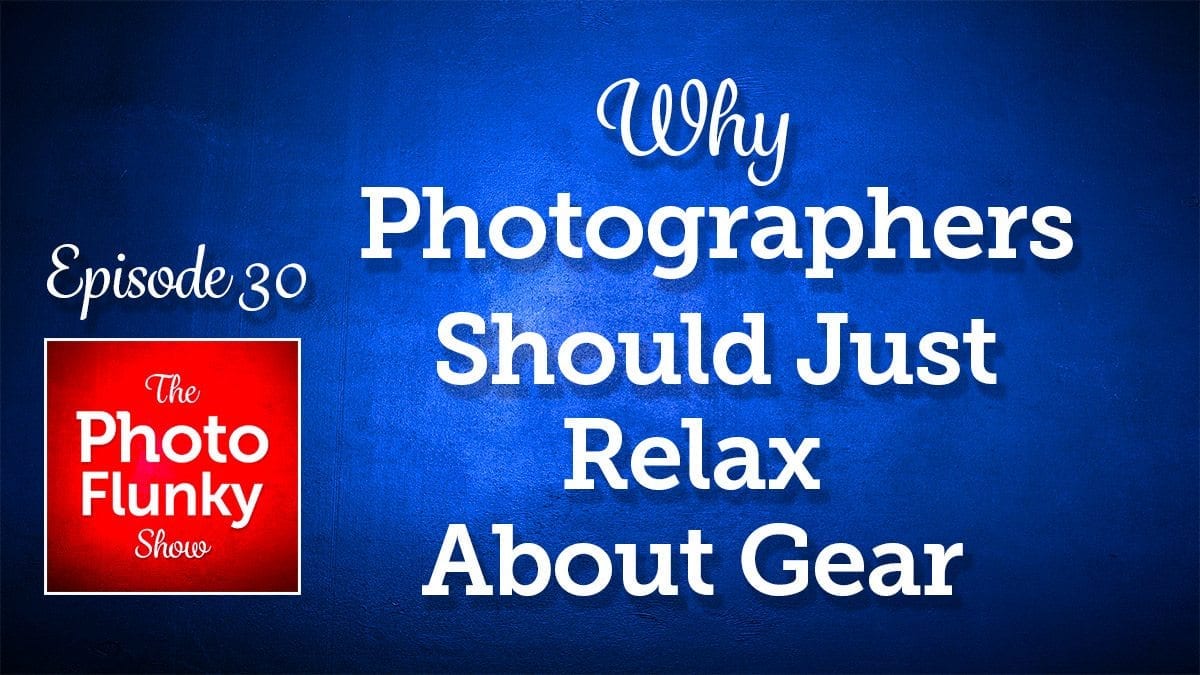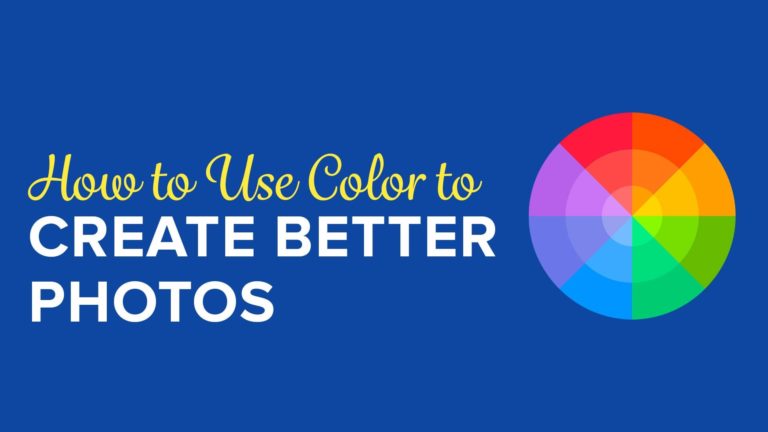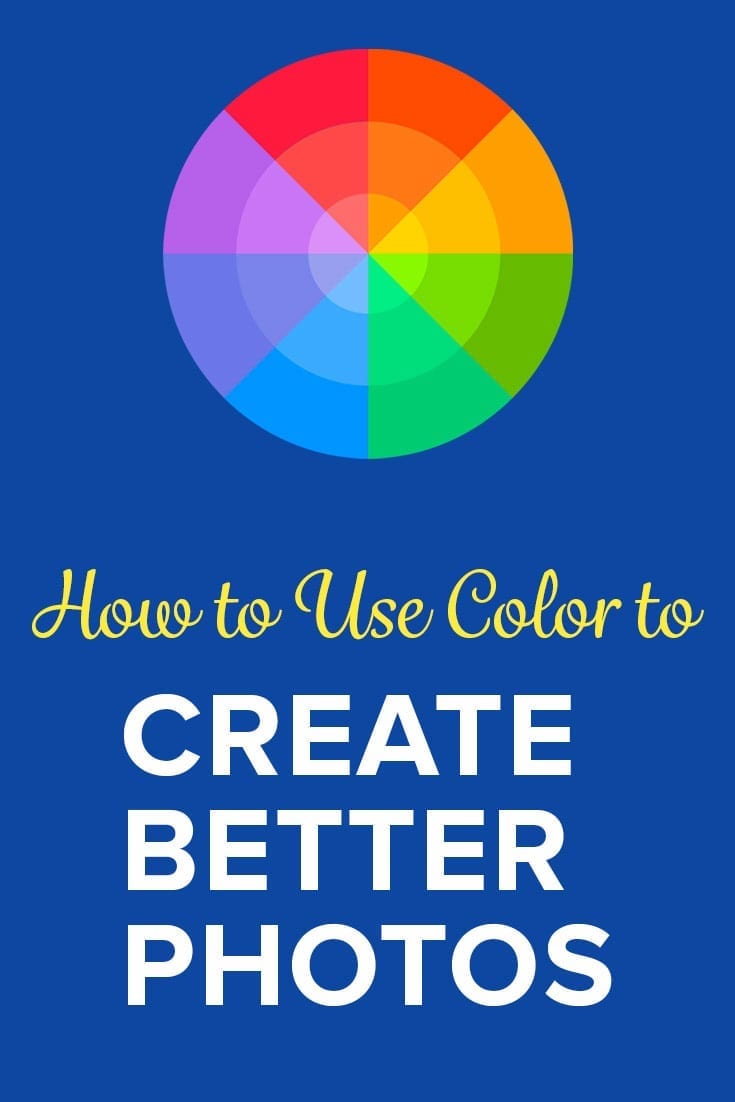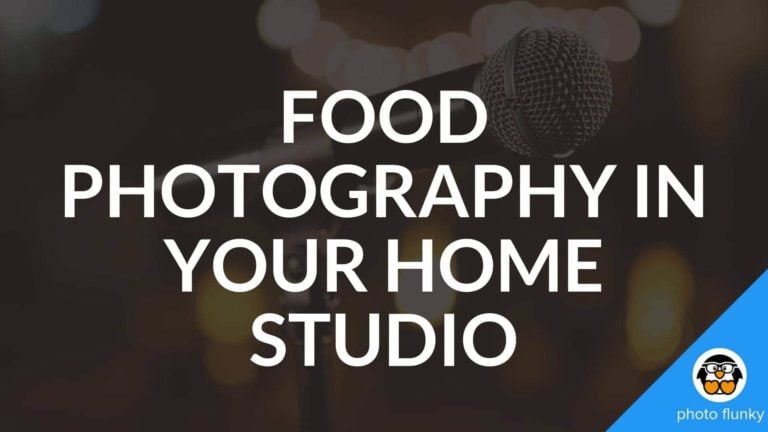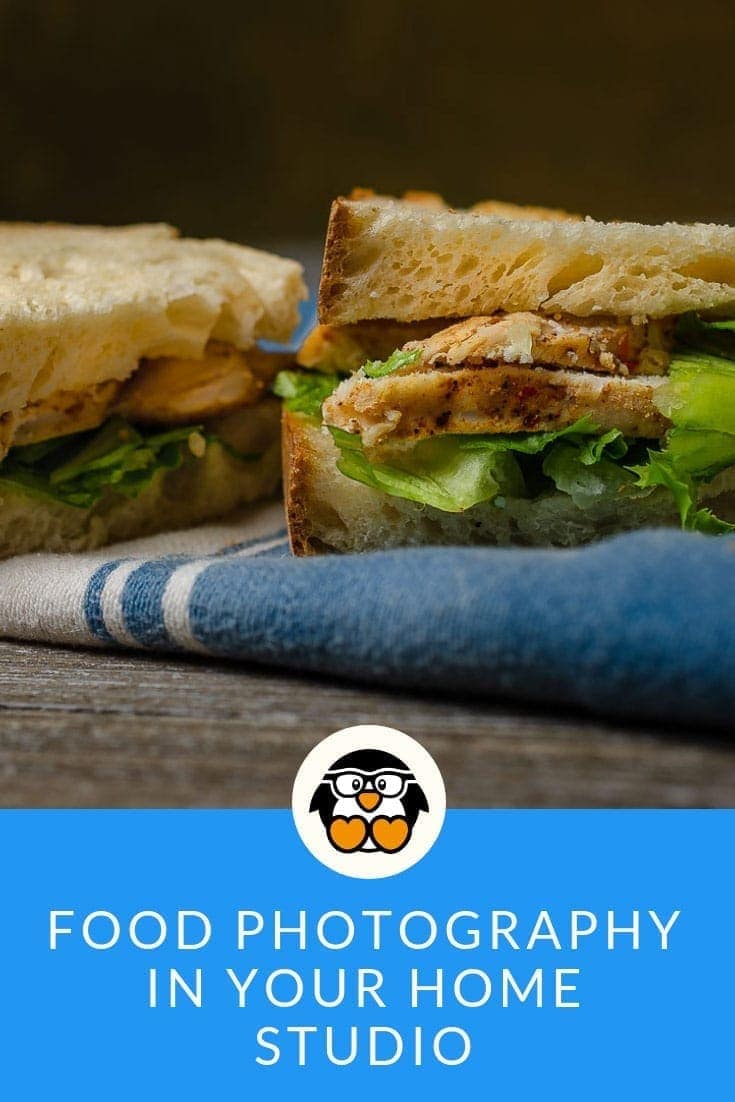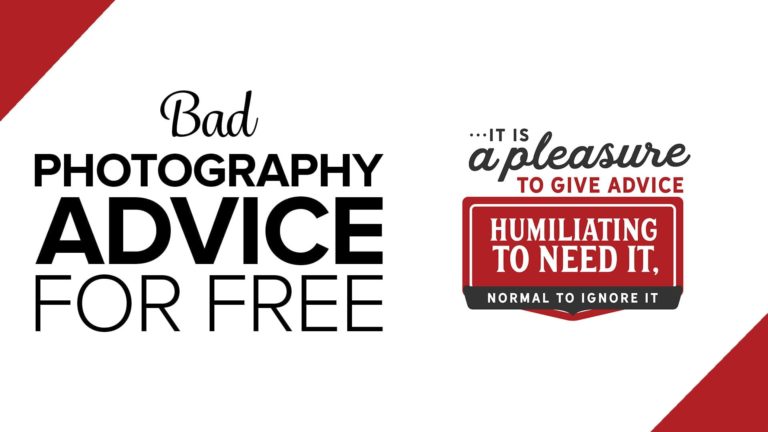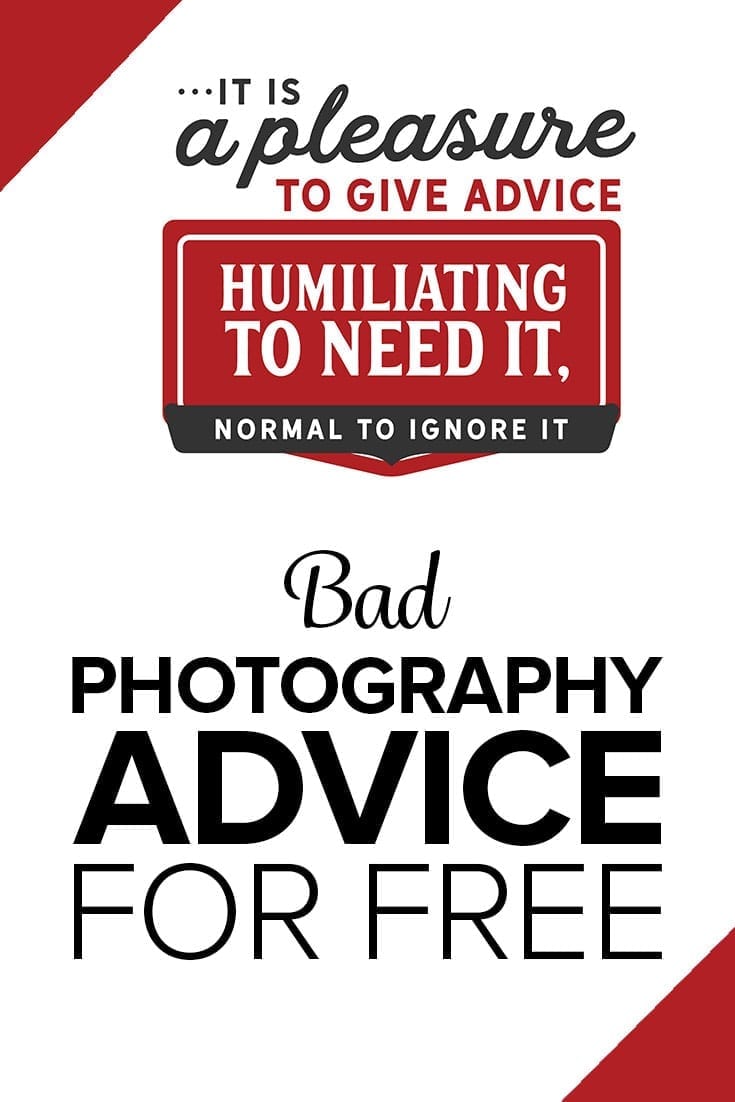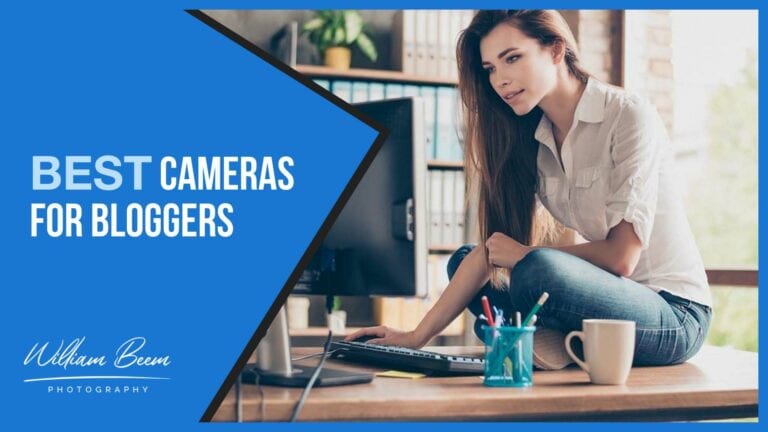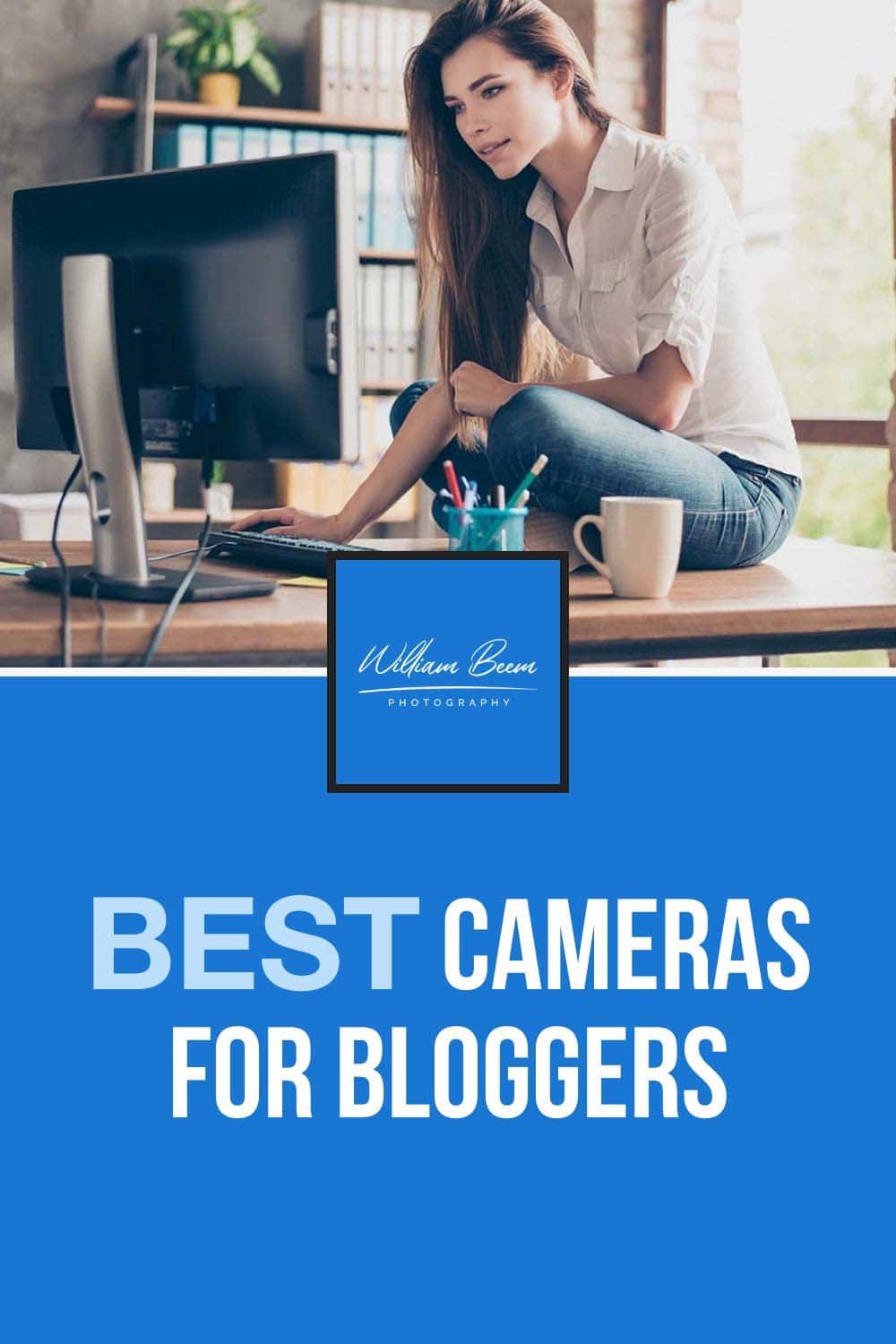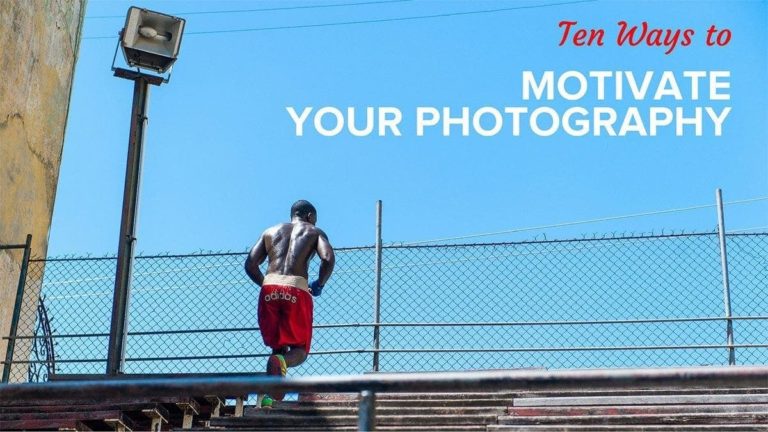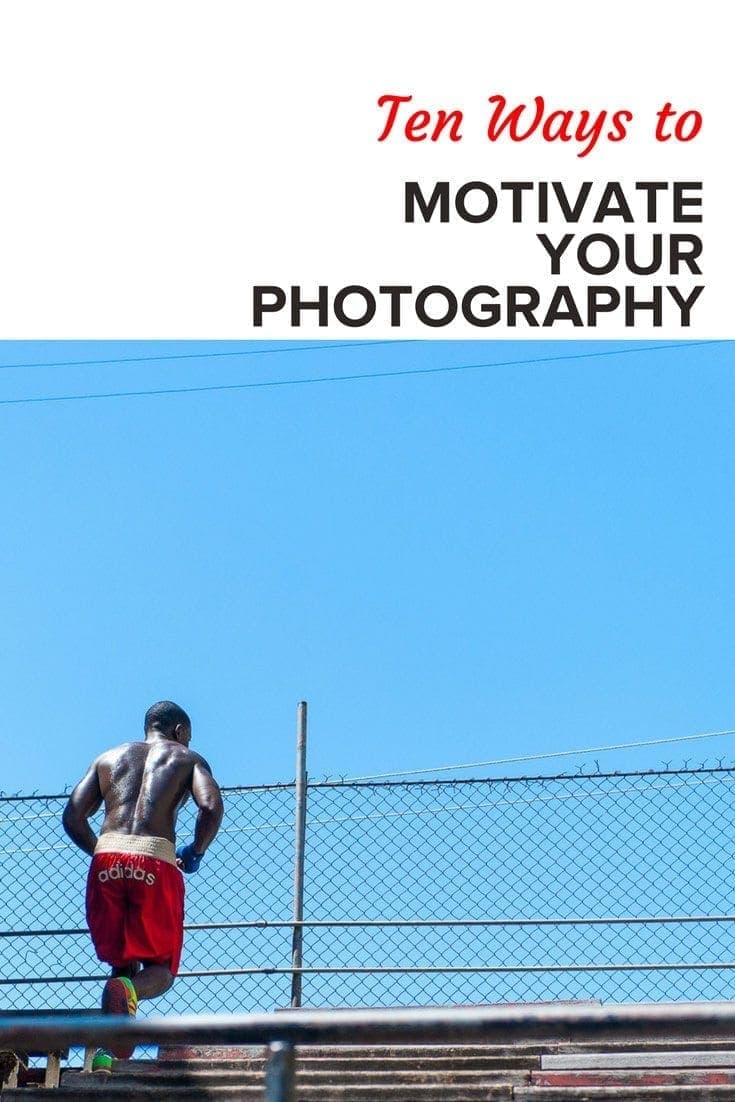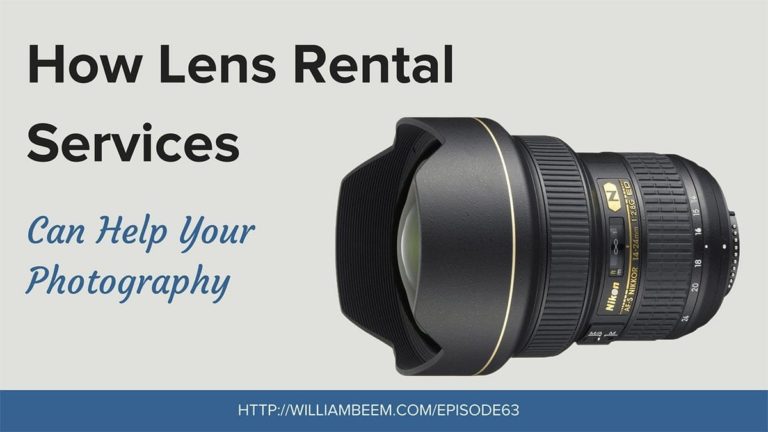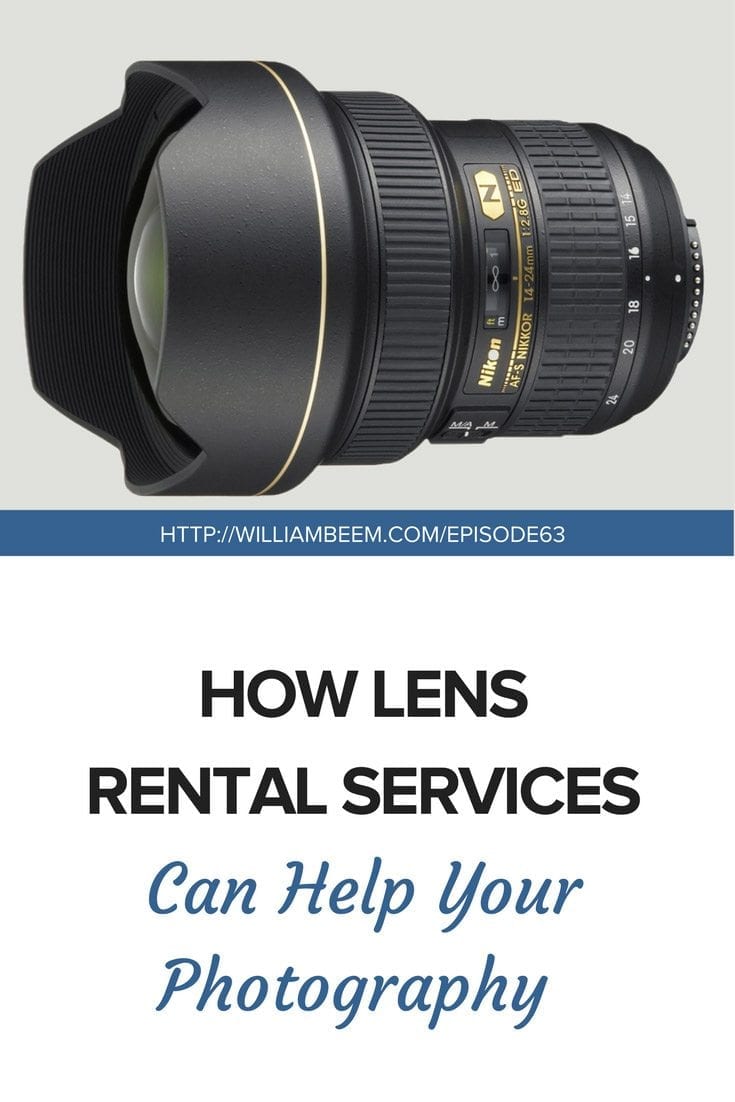Affiliate Disclosure: We earn a commission if you purchase through one of our links at no additional cost to you.
Relax About Gear – It’s Time for Photographers to Chill Out
Welcome to episode 30 of The Photo Flunky Show! I really appreciate you for listening.
Ever had lens lust? A secret desire to get your hands on some camera or lighting that just seems out of reach? Maybe it’s something within your budget, but it just doesn’t move the needle with your photography.
On this episode, Lee and I talk about the thing that matters more than your gear. It’s something you need for every photo you take, and it can make even the lowest camera take some stunning images.
Is gear completely irrelevant? Of course not. You need gear to do a job, but it’s just a tool. We’ll help you relax about gear and make the most of what you already have for your next photo.
If you’re curious about my gear, please check out my Resources Page to see what I’m currently using. It’s not the latest, but it does the job for me.
Subscribe to The Photo Flunky Show
Thank you for listening to The Photo Flunky Show. Make sure you get every episode by subscribing.
iTunes – https://williambeem.com/itunes
Stitcher – https://williambeem.com/stitcher
Google Play – https://williambeem.com/googleplay
Blubrry – https://williambeem.com/blubrry
Social Media Links
We love seeing your photos and keeping in touch with you on social media. Here’s where you can find us.
Transcript
THE PHOTO FLUNKY SHOW: Episode 30
Welcome to the Photo Flunky Show, Episode number thirty.
Today we’re going to talk about why photographers should just relax about their gear.
William: Hi! Thank you for joining the Photo Flunky Show. My name is William Beem.
Lee: Hi, I am Lee.
William: And today we’re going to be talking about why photographers should just relax about their gear.
But before we get to that, I’ve got a coupon code for you from Topaz Labs. It will give you a fifteen per cent discount and of course it’s an affiliate code so I’ll get a little bit of love back from them, but you get to save some money. In order to use this, go to williambeem.com/topazlabs and when you check out use the code WBEEMPHOTO. You’ll save fifteen per cent on software from Topaz Labs.
Aright, now that I’m stumbling over my words, let me go ahead and get into the big boy discussion.
OK, we’re talking about why photographers should just relax about their gear and we’re kind of bringing this up for reasons that people get obsessed thinking that the photo really comes from the gear. That’s just not the way it is. I mean, have you ever heard people come up to you and say, “Oh, you’ve got a nice camera. It must take wonderful photos”?
Lee: Yes!
William: I don’t know. I said well let me put it on the table and say, “Go take a photo please.”
Lee: And it doesn’t work?
William: It doesn’t do a thing, you know! So obviously the photographer is what makes the photo, not the gear. There are times when a certain piece of gear is necessary. For most of what you’re going to be doing, I don’t think the gear is really going to be that much of the overall picture. I think your creative vision and looking at what you’re going to shoot and how you’re going to shoot it is at least three quarters of what your photo is going to end up being.
Lee: It is, because if you have a certain kind of lens for example, you know what its limitations are, if you’ve had some time to get to know it. Hopefully you have and you will take your photo and set the scene and get things together based on the capabilities of the lens. You might do that slightly differently with a different lens.
I know that depending what lens I’m shooting with, I’m going to consider the photo and even frame it and put my settings very differently.
William: There are times when you need a certain piece of gear based upon the criteria of what you’re shooting. If you’re shooting sports or an event where there is a lot of action, you need a fast frame rate or you need to do a burst of photos. Your tiny little camera that shoots two, three or four frames per second isn’t going to do as well as the big expensive thing that shoots eleven, twelve or fourteen frames per second.
But, how often are you going to be shooting that? Are you getting paid for what you’re doing and is it really necessary, or do you need to work on your timing to overcome the limitation of a slower frame rate?
It depends on what you’re going to be shooting.
Lee: Look at our cameras. You’ve got full frame, I’ve got a crop sensor. Mine is obviously a lot less expensive than yours – well you’ve got two of them, so a lot less expensive than yours are. I’m not going to dare say that my camera is just as good as yours, but really, when we’re taking photos, if you took photos with my camera, unless you’re doing something very specific or cropping it a lot and you want the extra resolution or whatever the case may be, the average photo that we are going to go out and take you’re probably not going to tell the difference unless you’re looking for something.
William: You know there’s a big difference in the sensor on your camera and on mine. The primary one I like to shoot with is Nikon D800. It’s a 36 megapixel file that comes out as the result of it. It’s got great quality in it, but yet you’re shooting with what, the D7700?
Lee: The D7000 and I think it’s sixteen megapixels.
William: And the megapixels don’t matter, but for the average thing that we are going out and shooting, if you printed out both photos that I took and you took of the same thing, I couldn’t tell you the difference looking at them.
Lee: There are certain situations where we know that yours handles better. We’ve been taking a photo in a similar lighting situation and you’ll crank up your ISO and mine hits 1000 and I’m going, “I’m done.”
William: But if we’re out during the day or if there is decent lighting conditions out there, I can’t tell the difference between your shot, my shot and sometimes even a good iPhone shot.
Lee: That’s true.
William: So if you’re looking at a cell phone camera with that tiny micro dot of a sensor in it compared to both of our cameras and at the end of it you can put it in Lightroom or something else and just kind of tweak your settings a bit and you can come out with a wonderful result. Clearly it’s not the gear that’s making the difference in those shots. It’s which one looks better and which one was better composed and framed up.
Lee: That’s true because there are external factors that are going to affect your shot. Like you said, lighting was one of them and even putting your own lighting set-up there, you’re still going to get a better iPhone photo if you light your subject properly than you will with that iPhone if you don’t.
William: So we were thinking of some of the times when other photographers we’ve known and heard both online and in person – why they think they’ve got to have this piece of gear. And usually one of the first things that comes up is, well, my photos aren’t good enough so if I buy this piece of gear my photos are going to be better.
Lee: Sometimes you have a lens where it’s just not great and there are some lenses, but normally the manufacturer’s own lenses are pretty decent. Even just the little kit lens that comes with the camera, if you get one.
William: Even when you’ve got an expensive lens though, there are apertures where it does not perform as well. I mean, if you’re shooting kind of in the middle, F8 to F11 on any lens, you’re going to get a nice sharp result.
I don’t think that’s going to change anywhere. What you lose with shooting at that sharper aperture, whether it’s an expensive lens or an inexpensive lens, you’re not going to have that nice, soft defocused background that you get from having bokeh.
And this kind of goes back to one of the things that we talked about on a podcast a while back and that is shooting bokeh for the sake of bokeh because it’s so lovely. You’ve got a nice prime lens with an F1.4 aperture and ooh, everything is so creamy!
You know, it’s nice to have, but it’s not what really is always going to make the difference in your photo if you don’t know how to compose it and shoot it properly.
Lee: That’s true. And also, the other day just this week on Memorial Day, I was out with my camera and I was taking some shots and I don’t like cranking up my ISO (I know, I have a bit of ISO phobia) so what I was doing was just opening up the aperture. But when I got back I would have actually been better off to have turned up the ISO a little bit or slowed down the shutter speed because my focus was just not …. it didn’t have as much of the scene in focus as what I would have liked. So sometimes you can do things like that as well and I wouldn’t have made that mistake, had I used the cheaper lens that I had with me.
William: Yes, and it’s one of those things where even if you get a more expensive lens, one of the prime lenses that I have heard Nikon shooters really love is the 85 mm F1.4 prime. Because it does have an outstandingly beautiful, creamy bokeh with it when you shoot this thing wide open. But the danger of that is you’ve got a very narrow depth of field. If you’re doing a portrait and the person isn’t looking straight at you – maybe their face is at an angle – well, one eye is going to be in focus and the other eye is not.
Lee: Yeah.
William: That doesn’t necessarily make for a flattering photo, depending on how you’re lighting it. Having more expensive gear doesn’t necessarily mean you’re going to have a better photo. You can get great gear, not know how to use it and then still come up with, “Well, why did that not work for me?”
Lee: Well, one my favorite little lenses (and I just couldn’t afford to get something fast) – I really wanted a fast lens for low light. I had the 18-105 mm lens; it’s the kit lens I believe that comes with the D7000, although I already had it and bought just the body. So I bought the cheap, cheap 50 mm F1.8. And I mean this thing is about $100 on amazon, or it was at the time; we’re going back some years now. It was just dirt cheap! I love that lens. I mean it’s not perfect.
William: A lot of people love that lens.
Lee: And I prefer the 50 mm to the 35 mm and I know the 35 is more popular for a walkabout; I tend to crop in quite tight. But that is the cheapest lens and it remains one of my favorites.
William: Exactly. So it’s like if your photos aren’t good enough, the problem isn’t necessarily the gear. You should be able to take good quality photos with anything from an iPhone on up.
But what you really need to do is either work on your composition, work on your lighting, or work on your post processing. Sometimes the problem isn’t even what is coming out of the camera.
If you’re shooting raw files you’re going to see kind of a dull, flat image in the first place. If you really want your images to look sharper and better, maybe what you need is post processing rather than gear.
Lee: That’s true. And something that’s easy to use. If it’s taking too much time you want something quick, depending on how you like to process them.
William: On the opposite end of this, some people kind of shun some of that gear because it’s priced out of their reach. I don’t necessarily think that’s a reason to say you don’t need this or that. You need to determine what you are shooting. What does it require to do the job?
Even if it’s for fun or a hobby, I still think about it as a job. I’m going out on assignment when I am going out to take photos, even if I’m just shooting for fun for myself.
But if something is out of reach and you think it’s going to make a difference in your photography, there are places where you can go ahead and rent these lenses or rent a camera body and try them out. You can either try them before you buy them or just simply rent them as needed.
Lee: I’ve done that. I’m a big fan of renting if it’s just for a specific purpose. It was absolutely worth it.
William: I’ve done it a couple of times, too. And then as a result of renting sometimes, I’ve gone ahead and bought something.
For example, my first fisheye was a rental. I really didn’t know if I was going to like that or not and a fisheye can be overused, but it’s a fun lens.
Lee: Oh it is! That 10.5 mm Nikon one. Oh, my goodness! That was one that I rented. I had it for three weeks. Yeah, I considered it having an accident before it had to go back. I just couldn’t afford the lens and a fisheye is something I wouldn’t be using enough to justify the cost. It was really for a specific purpose.
But I am one of the people who have been priced out sometimes with a lens that I was told I really need. One of them was the 70-200 mm F2.8. I could not afford that! Having said that, with the 18-105 mm I needed some extra reach because I like my close up shots and my detail shots. So I did some homework, I bought the 55-200 mm and I tried it out and I sent it back. It was fine; it did the job. But then I bought the 70-300 mm. It’s also for a crop sensor. Not an expensive lens. I absolutely love it!
And then I forgot that I “had to have” the 70-200.
William: Well, the 70-200 mm is a wonderful lens, but it is a heavy lens. If you’re going to be walking around, you don’t necessarily want to carry this thing. It’s like a bazooka on the end of your camera and it’s solid. It’s made out of metal, it’s got heavy glass. I mean I always tell people you can club baby seals with this thing! Not that I advocate that, but it’s heavy and sturdy and it’s not necessarily what you need for every time that you need focal length. I mean for a travel lens, if you’ve got crop sensor you can go with the 18-200 mm or a 28-300 mm I think, on a full frame sensor. And it’s not going to be F2.8 from start to finish, but it’s still a very sharp lens. It’s still a very convenient lens. It will get you where you need to go if what you’re worried about is focal length.
Lee: Well, in good lighting it’s got the Active VR and it’s got the VR setting so you’ve got some control.
When we did the Wild Africa Trek, that’s the one that I took. You had the 70-200 mm and I had the 70-300 mm, yours being the much better lens, but it was daylight. It was natural daylight outside. Natural daylight?
I mean I didn’t miss the wider aperture; I didn’t need it and I didn’t need that faster lens. It was just perfect for the daytime shots.
William: In fact I would say it was better, because I was jealous of the fact that you could get in tighter than I could. I was there stuck at 200 mm on my long end and you were shooting animals at 300 mm. You had a better chance of getting in and getting tighter without having to crop after the fact, which is what I had to do with my shots.
Lee: And I didn’t dislocate my shoulder carrying it around!
William: No, I managed to twist my shoulder lugging that camera around. It was a fun day though. We went off to Disney’s Animal Kingdom and did the Wild Africa Trek, which instead of the little jungle safari they take you on trucks and go around, this one you kind of walk through the background and get to see the animals in a different way. Then they take pictures of the people in the trucks and have a strange little meal at the end of it.
Lee: Yes, with flowers. You get to eat the flowers.
William: I didn’t eat the flower.
Lee: You didn’t.
William: I threw my flower away.
Lee: Oh! I’m not a flower person. It’s OK. You’re safe.
William: Anyways, the more expensive lens isn’t always the better one for what you need, though. And I think that’s a perfect example. Your 70-300 did a much better job on that trip, as well as your lighter weight crop sensor camera. I’d say that was the better tool for the job than me going out there with the D800 and 70-200 mm lens on it.
Lee: I think it depends what you want. You get comfortable with what you know as well. I couldn’t have carried that camera and the lens that you had on. It would have been completely impractical for me and I think I probably wouldn’t have got any enjoyment out of the not very cheap experience. So for me it worked.
William: It definitely did and again, it worked because it was the right tool for the job, but also because you had the vision to get the shots that you did.
Lee: See, I haven’t really done that. I’m more of a budget type person. I like to consider whether I really need it and I don’t mind putting out the money for it, but I need to understand why I’m buying it first. And sometimes there’s a need for it.
But I know people where I’ve bought the smallest little accessory for my camera and they’ve gone out and bought exactly the same thing.
I think one of the thinks was a remote shutter release – a wired one. I wanted the wired one because I had a wireless and the infra red sensor was on the front of the camera, so for fireworks I wanted it plugged in so I could stand behind. And this person went out and bought one as well. I said, “Well, what for?” Because they didn’t even have a tripod. It was just funny to me, but you get these people who can afford it and therefore they just have to buy every little thing.
What did you buy? Oh, I need one too!
William: I’ve done that because I thought if I get in a situation and I’m going to need this, I want to have it with me. Since I’m a Nikon shooter, for a full frame there are two sets of Nikon trinity lenses.
On the zoom side there is a 70-200 mm, a 24-70 mm and the 14-24 mm lens. I’ve got those.
Then on the prime side, there is the 24 mm, the 35 mm and the 85 mm. And I’ve got those.
I don’t think of very many situations where I’ve picked up that 24 mm prime and that’s over $1,000! That’s like a $1,200 lens and mostly it just sits in a sock there on a box in my office.
Lee: In a sock?
William: See that sock right there?
Lee: I’ll take it out.
William: It’s not really a sock. It’s the little lens bag that comes with it.
Lee: I like to let other people buy the stuff and then I play with it to stop it gathering dust, so I think you haven’t seen your 24-70 mm since we got married! It’s been stuck on my camera. And your 35 mm!
William: I like the 35 mm prime, but yeah, you’ve taken that over as well as the 24-70 mm. But that’s OK. I love you and I love my lenses.
But you know I bought those thinking that I would use them much more than I did and I took the 85 mm out and did a few portraits on it and really liked some of the portraits that came out. But I realize I can get bokeh that’s just as nice from the 70-200 mm racked out to 200 mm as I get with the 85 mm and I like the compression at 200 mm better than I like the 85 mm.
It’s a tool. It does a job, whether it’s a zoom or the prime and I’ve got it, but I’d say the bulk of what I do is with the 24-70 (when I’m allowed to have it) and the 70-200 mm.
Lee: Permission!
Ooh, do you know what? Confession! I lied. I have bought something that I didn’t need.
William: What was that?
Lee: It was the Tokina 11-16 mm F2.8.
William: And you don’t really shoot that wide.
Lee: I don’t shoot wide, but I had been convinced. There were photos that I was watching and I was going on vacation in a couple of months and I loved the photos and they were all shot with a wide angle lens. So I had a look at this. I don’t recall – I think it cost about $600 or something. I looked into renting and it was going to cost me the same to rent it, or more to rent it, for three weeks than to buy it. So I figured I’ll buy it and then I’ll sell it when I’m done with it. Because that was going to be cheaper.
So I did buy it. I had some fun with it, but I really didn’t shoot that much with it. I realized I don’t care for the wide angle and I didn’t sell it. It sat there and I was almost trying to make myself need it and two years later a newer version came out and the price plummeted and I lost a lot of money on it because it was sitting in a closet.
William: Yeah, I know what you mean. Now I do like shooting wide things. In fact that time a few years ago I got a private tour of the US Capitol. I contacted my congressman’s office and they took me everywhere I wanted to go, including up to the Speaker of the House; I got into a couple of places where people looked at us funny and we had to leave.
Lee: Oh, no!
William: But the only lens I took, because I wasn’t allowed to carry a bag around, basically I could carry a camera with one lens. I put the 14-24 mm on that and it was perfect. It was exactly what I needed. I’d say that there might have been a couple of shots where I could have done something a bit tighter up on the ceiling someplace, but for everything I did, that 14-24 mm was exactly what I needed. I didn’t really have distortion problems with it at all and I’m really happy with the shots I’ve got.
I can’t wait for them to finish the retrofit of the Capitol because I want to go back and do some more shots and I was sending off a note to the architect of the Capitol to try and get even more access. But it’s just a fun place to shoot and that lens just did everything I needed to do. Plus, I was also even doing little three bracket exposures, hand-held, and it’s wide enough so that you don’t have much shake when you’re holding that lens, so I could still even do HDR hand-held with that lens.
Lee: That’s really nice. I think that also comes down to knowing the tools that you need for the task. You make the best pick. Kind of like what I did with the Wild Africa Trek. We could only have one lens mounted on the camera so you make your selection.
But I mean if you were in a situation where you didn’t have one, I can see where a wide angle would work for those kinds of shots. It would have made sense to rent one, rather than to go drop $1,000 on a lens.
William: Absolutely, because I’ve used it there; I’ve used it in Las Vegas and a couple of other, pretty much city scenes is where I’d end up using it. But other than that, it just sits in a bag here.
Lee: Of course if people have the money that they just want to buy it because it’s burning a hole in their back pocket, feel free to buy it, preferably Nikon gear, send it over to me when you’re done and I’ll make sure it doesn’t gather dust and I’ll keep it well loved.
William: That’s very thoughtful of you.
But I’m kind of coming with the other message. Don’t buy it just because you can afford it, because I’ve done that. For example, one of the things that I ended up buying because I was convinced that I needed it and I have never used it, was a filter. It’s a Lee Big Stopper. These things are hard to come by. I guess the manufacturing process is difficult and they only dribble out every so often. It’s a few hundred bucks just to get this filter and it is a ten stop neutral density filter. So remember when we were talking about people shooting photos of sticks in water? That’s what they used to shoot their photos of sticks in water.
Lee: OK, see not a ten stop; I think I had a six stop? I also bought neutral density filters. It was the only way I ever shot fireworks; with the exception of the time I used a fisheye where you obviously couldn’t put a filter on top of it. That was the most expensive filter I ever bought, because I went and bought one that was just kind of run of the mill – I don’t remember what I paid for it, but it was maybe $30 or $40 and I thought it would do. It was absolutely terrible! It actually looked like the lens was dirty and I could not do anything about it.
So I bought the one that I should have bought in the beginning that was more expensive, as well as the one that was useless. So do your homework, but it’s not to say that the most expensive thing is always the best thing or the only thing.
William: But it’s always best to buy something once.
Lee: Yeah. The most expensive thing you buy is the thing you buy twice.
William: Yes. That’s why for tripods I just went ahead and spent the money on the Really Right Stuff tripod because in years past, when I had older, cheaper tripods, they didn’t do anything at all for me. They would shake, they would rattle and then the photo would be blurry. It wasn’t worth it. I went out and got the right tripod for the cameras that I’m shooting these days and I’ve never regretted it.
Lee: You’ve got heavy cameras and heavy lenses. I mean you wouldn’t trust your camera on my tripod. Mine is probably OK. I’ve never had any issues, but I don’t have an expensive tripod. Mine is probably about a hundred bucks?
William: Well you probably wouldn’t take your tripod in some of the places I’ve taken mine though.
Lee: Oh, I’m sure.
William: Alright, one of the last things we came up with was your photography hero has xyz. Whatever it is; lens, lighting and so forth. It’s easy to get excited when you see someone who does great work. Someone you particularly admire and you see their gear and think, I need to have that same gear to take shots like that. Honestly, the answer is still no. You really don’t.
In order to take great shots like that you probably need to have a budget and a crew and access to something that most of us may not have access to on a regular basis.
Lee: That’s true, but sometimes the secret is in the vision and the set-up and you can make your own shots with your own style based on what you have learned or loved from your photography hero.
William: Well, exactly. And I think that’s really important: learning the lessons of how to produce a shot if it’s something that you’re not necessarily going off to do architecture and landscape. You just go there at the right time and set up and then take your shot.
If you need to produce a shot I think you can do that with very minimal gear. There are a couple of photographers in Russia that I’ve been watching on 500px who have made themselves quite popular on 500px and they are producing phenomenal photos based off of their imagination, but not really using complex gear or lighting equipment or anything like that. It’s their imagination and their post processing that is really bringing these photos out because they are doing things that they have imagined and brining them to life. That’s original.
Lee: They had a vision and they are executing it.
William: That’s exactly the right way to put it. If you have a vision and you know how to execute it you can probably do it with most of the gear that you’ve got. If you’ve got a camera and a lens and there is some source of light, you can take a great photo if you have got a good vision for it.
Lee: Yes, and just a little bit of basic post processing.
William: I like my post processing, too.
Lee: I like it. I mean I don’t waste – I don’t want to say I don’t waste time because I certainly don’t waste time on it – but I don’t spend as much time as I possibly could. But if you’re shooting raw, like you mentioned earlier, your photos need a little bit of a tweak.
William: Everything needs a little bit of love. I mean every raw photo is going to need some sharpening because it is just simply not in there. You’re going to need to tweak the contrast and stuff, but those are as you said, basic things. Depending on your imagination, you may want to do more and get deeper into Photoshop, but that’s really why photographers need to relax about the gear and spend more time on their imagination and think about how am I going to produce a shot? Rather than what gear is going to grab a shot for me?
Lee: Yeah, I think you need to visualize what you want in the end – your end product – and then work your way backwards to make sure you’ve got the basics for it and figure out how to do it.
William: Exactly.
Well, I hope this has been helpful for you and why we think photographers should just relax about gear. It’s really more about your vision and how you make things happen.
William: Thank you very much for joining us on episode thirty of the Photo Flunky Show. You can get a transcript for free at williambeem.com/episode30 of course there are links there to subscribe to the show on iTunes, Google Play Music and Stitcher Radio.
Don’t forget we’ve got a fifteen per cent coupon code for Topaz Labs. Just go to williambeem.com/topazlabs and when you check out use the code WBEEMPHOTO
Thank you very much for joining us. We really appreciate you. Hope to see you again here next week.

